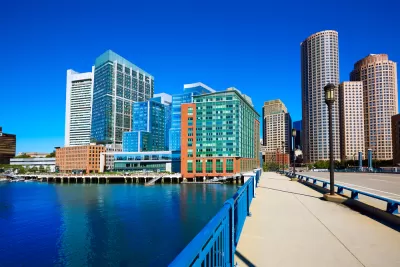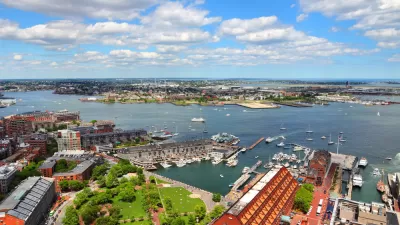The Boston waterfront has been booming, but the area is extremely vulnerable to climate change and rising sea levels. Measures to address those risks have come just recently.

The Seaport District of Boston has seen immense growth in the last decade, with construction of a slew of new office buildings, condominiums, and museums. But the area is prone to flooding, and projections show the problem will only get worse.
Yet developers and the city, eager to see the Seaport District transform, are just now moving to protect buildings from climate change threats. “Developers are elevating ground floors, putting electrical and other critical equipment on higher ones, and investing in salt water-resistant materials and flood barriers to protect garages and other vulnerable areas of buildings. Boston is planning a series of sea walls, berms, and other structures that will act like a barricade against Mother Nature,” write Prashant Gopal and Brian K. Sullivan.
Other cities, including New York and Miami, are also putting flood-protection measures into place. But observers of the Boston waterfront development say that building took precedence over planning for climate change. "No American city has left such a large swath of expensive new oceanfront real estate and infrastructure exposed to the worst the environment has to offer, according to Chuck Watson, owner of Enki Research, which assesses risk for insurers, investors, and governments,” note Gopal and Sullivan.
FULL STORY: Boston Built a New Waterfront Just in Time for the Apocalypse

Planetizen Federal Action Tracker
A weekly monitor of how Trump’s orders and actions are impacting planners and planning in America.

San Francisco's School District Spent $105M To Build Affordable Housing for Teachers — And That's Just the Beginning
SFUSD joins a growing list of school districts using their land holdings to address housing affordability challenges faced by their own employees.

The Tiny, Adorable $7,000 Car Turning Japan Onto EVs
The single seat Mibot charges from a regular plug as quickly as an iPad, and is about half the price of an average EV.

With Protected Lanes, 460% More People Commute by Bike
For those needing more ammo, more data proving what we already knew is here.

In More Metros Than You’d Think, Suburbs are Now More Expensive Than the City
If you're moving to the burbs to save on square footage, data shows you should think again.

The States Losing Rural Delivery Rooms at an Alarming Pace
In some states, as few as 9% of rural hospitals still deliver babies. As a result, rising pre-term births, no adequate pre-term care and "harrowing" close calls are a growing reality.
Urban Design for Planners 1: Software Tools
This six-course series explores essential urban design concepts using open source software and equips planners with the tools they need to participate fully in the urban design process.
Planning for Universal Design
Learn the tools for implementing Universal Design in planning regulations.
Smith Gee Studio
City of Charlotte
City of Camden Redevelopment Agency
City of Astoria
Transportation Research & Education Center (TREC) at Portland State University
US High Speed Rail Association
City of Camden Redevelopment Agency
Municipality of Princeton (NJ)





























